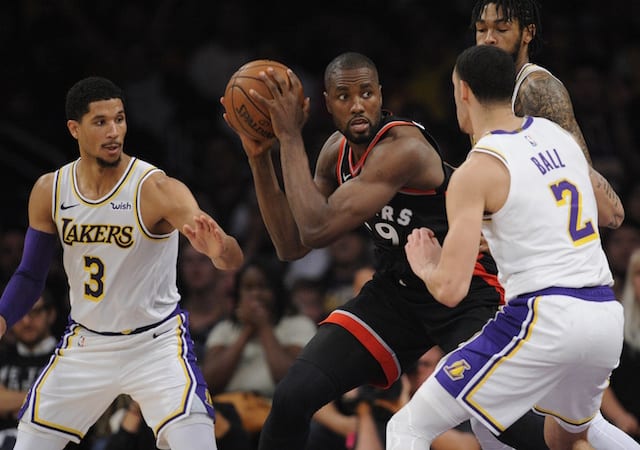He did it again.
After showing the world that his scoring capabilities are far from diminished in the four games before Tuesday night’s matchup (33 points a game on 50 percent shooting), he capped his Player of the Week exclamation point with another one: 48 points on 58 percent shooting against division rival Phoenix, all without a single three-pointer. The pattern never changes, it seems. Kobe shoots poorly one game (as he did against Denver), then gets blasted for it by fans and media members alike. Consequently, Kobe channels his inner Mamba, and violently explodes for a 40 or 50 point game. It’s the paradox that comes with such a superstar, long characterized as a volume scorer whose scoring binges come at the expense of his capable teammates.
Thus the following rhetoric: Kobe’s a ball hog. Kobe’s a shot-chucker. Kobe doesn’t know how to pass the ball.
The most recent ammunition for such arguments has been total assist count. Bryant averaged 4.7 assists per game last year, and in comparison to LeBron James’ seven assist per game, his totals seem paltry. This is not meant to serve as any comparison between the two players, but rather as an understanding that the contexts in which these players played were different. In the NBA, hockey assists don’t count, and plays that were set up and started with Kobe often ended with a zero in the assist totals. LeBron’s offense often generates when he drives to the rim, forcing the defensive collapse and kickout.
Different contexts, different skill sets, different results.
Coach Mike Brown’s arrival in Los Angeles drastically changed the matrix in which Kobe operates, and should prove more than anything else that Kobe is not merely a high volume scorer. With Kobe operating as the primary ball-handler in these first 11 games (as LeBron would have done in Cleveland), Kobe’s assist totals have dramatically increased from last season’s average. Kobe is averaging almost six assists a game this season, and is assisting at a greater percentage than he ever has in all the years of the Triangle.
httpvhd://www.youtube.com/watch?v=6ye3D2nagUs&feature=watch_response
Did Kobe suddenly learn how to pass during the lockout? I doubt it. Brown’s system calls for Kobe to do more, and Kobe is doing just that (to the anxiety of many a Lakers fan).
Consider these statistics:
-Kobe is averaging an assist on 34.4 percent of team possessions while on the floor, marking the highest assist percentage of his career. That 34.4 percent nearly matches Michael Jordan’s highest assist percentage of 34.7 percent, a number he reached in his fifth season as a Bull.
-Kobe’s 34.4 percent assist percentage is ranked 18th among guards in the NBA, and second among shooting guards. At this rate, Kobe is assisting more than notable point guards John Wall, Stephen Curry, Russell Westbrook, Ty Lawson, and Jameer Nelson. Nash, Rondo, Rubio, Calderon, and Williams make up the top five of that list. Monta Ellis is the only shooting guard whose assist percentage is higher than Kobe’s, at 37.3 percent.
-After factoring in total assists into the equation, Kobe ranks 13th in assist percentage for all guards who have an average of five assists or more per game. Out of the top 20, Kobe has the highest Player Efficiency Rating (at 26.5) and ranks second in Win Shares per 48 minutes, trailing only Bulls point guard Derrick Rose.
In light of Kobe’s brilliance on Tuesday against the Suns, it can be easy for his detractors to argue that Kobe’s numbers only reflect his me-first attitude. That Kobe put the team’s priorities on a backburner to his own. I would argue that his numbers demonstrate otherwise, illuminating a superstar who has no qualms sharing the wealth. In fact, without Kobe’s playmaking ability these past few games, it is very likely that the Lakers could have been looking up to every other team in their conference.
For a 33-year old veteran who’s suffering through a busted wrist, Kobe’s play is not too shabby at all.





